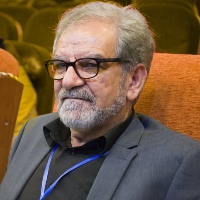Soil texture fractions modeling and mapping using LS-SVR algorithm
Author(s):
Article Type:
Research/Original Article (دارای رتبه معتبر)
Abstract:
Soil texture is variable through space and controls most of the soil’s Physico-chemical, biological and hydrological characteristics and governs agricultural production and yield. Therefore, determining its variability and generating accurate soil texture maps have a key role in soil management and sustainable agriculture. The purpose of this study is to introduce a numerical algorithm named Least Square Support Vector Machine for Regression (LS-SVR) as a predictive model in Digital Soil Mapping (DSM) of soil texture fractions and evaluating its performances based on modeling evaluation criteria. In this study, the soil texture data of 49 soil profiles in Tabriz plain, Iran, was used. The important covariates were selected using Genetic Algorithm (GA). The model evaluation results based on ME, MAE, RMSE, and R2 indicate the high performance of LS-SVR in predicting soil texture components. The prediction RMSE for sand, silt, and clay was 6.82, 5.08 and 6.06, respectively. Silt prediction had the highest ME and the lowest MAE and RSME values. The algorithm simulated the complex spatial patterns of soil texture fractions and provided high accuracy predictions and maps. Therefore, the LS-SVR algorithm has the capability to be used as predictive models in soil texture digital mapping. This study highlighted the potential of the LS-SVR algorithm in high precision soil mapping. The generated maps can be used as basic information for environmental management and modeling.
Keywords:
Language:
English
Published:
Pages:
147 to 154
https://www.magiran.com/p2251752
سامانه نویسندگان
مقالات دیگری از این نویسنده (گان)
-
Evaluating the relationship between citizens' motivation and the quality of Volunteered Geographic Information: A case study of urban green spaces in district 6 of Tehran
Zahra Aminirad, Narjes Mahmoody-Vanolya, Mohammadreza Jelokhani-Niaraki *, , Saeid Hamzeh
Human Geography Research Quarterly, -
The influence of urban stractures, vegetation cover, and utilized data in urban impervious surface mapping from multi-source data
Ali Abdolkhani, Sara Attarchi *,
Geographical Urban Planning Research,



